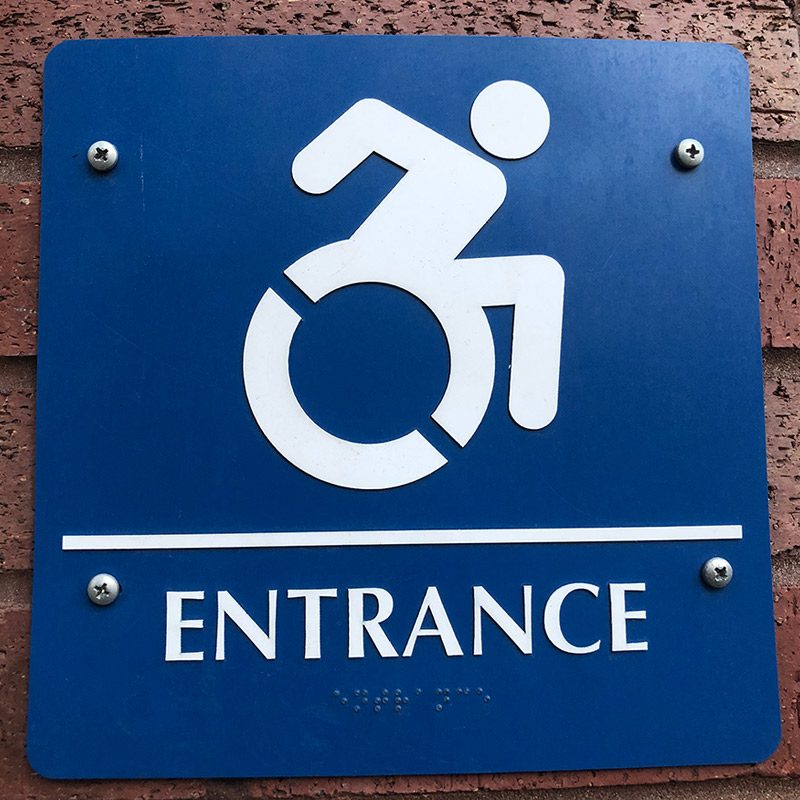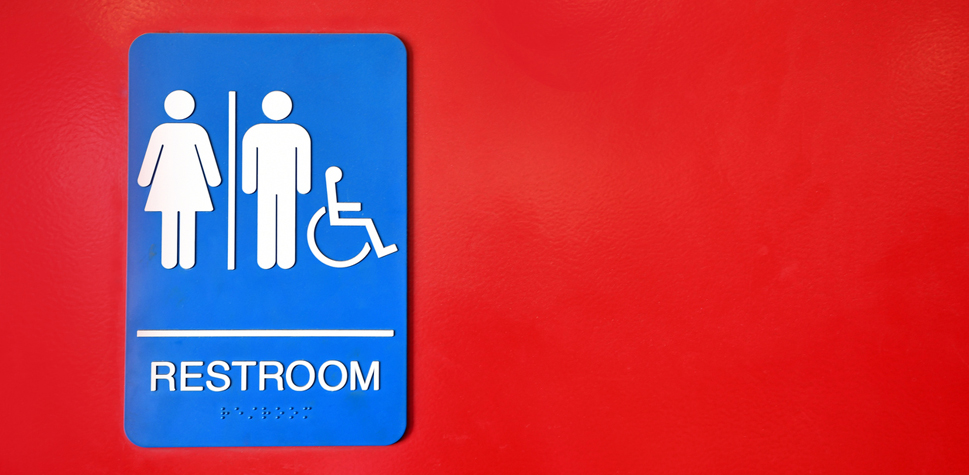ADA Signs: Necessary Devices for Inclusive Settings
ADA Signs: Necessary Devices for Inclusive Settings
Blog Article
Checking Out the Secret Functions of ADA Indications for Improved Ease Of Access
In the world of ease of access, ADA indicators serve as quiet yet effective allies, making sure that areas are accessible and comprehensive for people with impairments. By incorporating Braille and responsive components, these indications damage barriers for the visually impaired, while high-contrast color schemes and readable fonts cater to diverse aesthetic needs.
Value of ADA Compliance
Making sure compliance with the Americans with Disabilities Act (ADA) is essential for cultivating inclusivity and equivalent access in public areas and offices. The ADA, passed in 1990, mandates that all public centers, companies, and transportation services suit individuals with specials needs, guaranteeing they enjoy the same legal rights and possibilities as others. Compliance with ADA standards not only satisfies lawful responsibilities yet additionally boosts a company's reputation by demonstrating its dedication to variety and inclusivity.
One of the key aspects of ADA conformity is the implementation of available signage. ADA indications are developed to make sure that individuals with handicaps can conveniently browse through spaces and buildings.
Furthermore, sticking to ADA policies can alleviate the risk of possible fines and lawful effects. Organizations that fail to adhere to ADA guidelines might face suits or charges, which can be both harmful and monetarily difficult to their public picture. Hence, ADA conformity is essential to promoting a fair environment for every person.
Braille and Tactile Elements
The unification of Braille and responsive aspects right into ADA signs embodies the concepts of ease of access and inclusivity. These attributes are essential for people that are blind or aesthetically damaged, allowing them to browse public spaces with higher independence and self-confidence. Braille, a tactile writing system, is essential in offering written details in a format that can be conveniently viewed through touch. It is generally put underneath the corresponding text on signage to make sure that individuals can access the information without visual support.
Tactile elements extend beyond Braille and consist of raised characters and symbols. These parts are created to be noticeable by touch, permitting people to identify space numbers, restrooms, exits, and various other essential locations. The ADA establishes specific standards regarding the dimension, spacing, and placement of these responsive elements to optimize readability and ensure consistency across various settings.

High-Contrast Color Design
High-contrast shade schemes play a crucial function in improving the visibility and readability of ADA signage for people with visual impairments. These systems are vital as explanation they optimize the distinction in light reflectance between message and background, making sure that signs are quickly noticeable, even from a distance. The Americans with Disabilities Act (ADA) mandates making use of specific color contrasts to accommodate those with limited vision, making it a crucial facet of conformity.
The efficacy of high-contrast colors exists in their capability to stick out in various lighting conditions, including dimly lit atmospheres and areas with glare. Normally, dark message on a light history or light text on a dark background is employed to achieve optimal comparison. Black text on a white or yellow history provides a stark visual difference that assists in quick recognition and understanding.

Legible Fonts and Text Dimension
When considering the style of ADA signage, the choice of legible typefaces and ideal text size can not be overemphasized. The Americans with Disabilities Act (ADA) mandates that typefaces need to be not italic and sans-serif, oblique, script, very decorative, or of unusual form.
According to ADA guidelines, the minimal message height must be 5/8 inch, and it should raise proportionally with seeing range. Consistency in message size adds to a cohesive aesthetic experience, aiding people in navigating atmospheres successfully.
Furthermore, spacing between letters and lines is important to legibility. Appropriate spacing prevents personalities from showing up crowded, enhancing readability. By sticking to these standards, designers can considerably improve access, guaranteeing that signs offers its intended function for all people, no matter their aesthetic capacities.
Effective Positioning Methods
Strategic positioning of ADA signs is essential for taking full advantage of availability and making certain compliance with legal criteria. ADA guidelines stipulate that indicators must be installed at a height between 48 to 60 inches from the ground to ensure they are within the line of view for both standing and seated people.
Additionally, indications should be positioned surrounding to the lock side of doors to allow very easy identification prior to entry. Uniformity in indication placement throughout a center enhances predictability, minimizing confusion and improving total individual experience.

Conclusion
ADA indicators play a vital role in promoting ease of access by integrating features that address the needs of people with linked here specials needs. These elements collectively cultivate a comprehensive setting, highlighting the value of ADA compliance in guaranteeing equal accessibility for all.
In the world of availability, ADA indications offer as silent yet effective allies, making sure that rooms are accessible and comprehensive for people with impairments. The ADA, enacted in 1990, mandates that all public centers, companies, and transportation solutions fit individuals with disabilities, guaranteeing they take pleasure in the exact same rights and possibilities as others. ADA Signs. ADA indications are developed to ensure that people with impairments can conveniently browse through structures and areas. ADA standards state that signs must be mounted at an elevation between 48 to 60 inches from check my site the ground to guarantee they are within the line of sight for both standing and seated people.ADA signs play an essential function in advertising availability by integrating attributes that deal with the demands of individuals with handicaps
Report this page